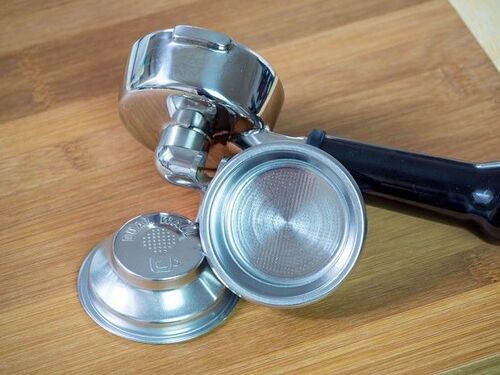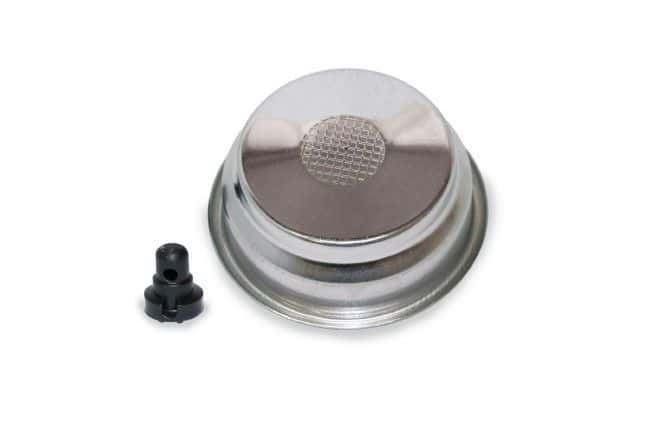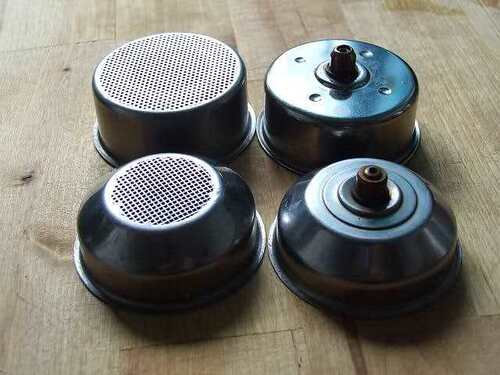I’m sure that more than once, you’ve come across the term pressurised filter while looking for information about a coffee maker or simply reading to learn more about your favourite hobby (which we’re sure is making coffee, right?).
Be that as it may, pressurised filters and filter baskets are concepts that not all users are familiar with; many even use them in their coffee machines on a daily basis without knowing it. Through this article, we want to shed some light on this subject, explain what exactly a pressurised filter is, what it is for, and what are its advantages and disadvantages. As you will see later on, there is a whole debate around the convenience or not of using them, in-home coffee makers.
Pressurized filter: Definition
The concept of a pressurised filter must be put into context. It is a device that is only used in some espresso machines. If your coffee machine is of any other type, don’t make an effort to look for it because you won’t find it anywhere.
A pressurised filter is nothing more than an artificial system that is attached to the filter of an espresso machine and which serves to improve the production of cream. They are usually a second screen – or double-wall – that covers most of the filter outlet holes or directly an opaque layer that leaves only the centre holes free.
In the following image, you can see a pressurised filter. Below you can see a picture of a normal (non-pressurised) filter and compare both.

For purely physical reasons, a liquid moves faster through a narrow channel than through a wide one so that the pressurised filters eventually propel the coffee into the cup with greater force than a normal (unpressurised) filter would.
The result: cream is formed more easily and in greater quantity, regardless of any other parameter involved in coffee extraction. Coarser than normal grinding, oxidised coffee, very hard beans, everything takes a back seat if we have a pressurised filter in our coffee maker since our coffees will always be crowned by a dense and abundant layer of hazelnut-coloured cream.
In other words, pressure filters seem like the invention of the century, don’t they?
Well, the truth is, if you’re a fan of cream in the coffee, having a pressurised filter will make you enjoy it. But it is also true that pressurised filters have many detractors, to the point of changing the filters of your coffee machine for normal ones (not pressurised) if they see that the result does not satisfy them.
Here is an example of a user who depressurises the pressure filter of his Delonghi coffee machine:
Pressurized filter basket
Sometimes these systems for increasing cream production are integrated not in the filter holder (or ladle) but in the filter basket itself. It is called a pressurised filter basket.
Pressurised filter basket uses normal filters but produces a greater quantity of cream than usual because they are designed in advance to allow the coffee to flow to the outlet through a single point. They usually achieve this by using a small plastic piece or valve, whose function is to channel all the coffee extracted to a single point.
You can see it in the following image:

Is using a pressurized filter good or bad?
We have already said before that pressurised filters (or filter holders) have quite a few detractors. The reason is very simple: these systems do not improve the quality of the coffee but basically produce a fake cream. The cream that results from using a pressurised filter is not the result of a good extraction but simply that the coffee comes out with more force than it should.
If you usually drink only lattes, then the cream detail is not going to matter much to you.
However, if you are an espresso drinker and consider yourself minimally demanding with its taste, then you should use non-pressurised filters, even if you are not a professional barista and only prepare them at home.
Keep in mind that making espressos is not a simple or mechanical process. It is an art that involves many variables, whose technique you learn to improve through practice, trial and error, making many espressos, tasting them and analysing the conclusions.
One of the most important aspects that are analysed in the quality of an espresso is the appearance of the cream during and after the extraction of the coffee.
If you use a pressurised filter, the cream you will see is not the real one, and therefore it will not serve you to draw conclusions or to improve your espresso-making technique. You will have a lot of difficulties knowing if espresso is good or bad quality.
How do you use a pressurized filter?
Yes, if, after reading the whole article, you have come to the conclusion that coffee is prepared the same way in any filter, you are very much mistaken.
If you are going to use pressurised filters and want to get a decent espresso, you should follow certain guidelines.
As in a pressurised filter, the coffee will only go through one point; the resistance it will encounter will be much greater than in a normal filter. It means that if you use a very fine grind (ideal for an espresso), the resistance of the coffee flow will be even greater, so with pressurised filters, you should use a slightly coarser grind than recommended.

Precisely one of the advantages of using pressurised filters is that they can produce a decent and very creamy extraction, even if the grinding is not of the right fineness. That’s why their use and assembly is very widespread in domestic coffee machines: many users seek to obtain a decent coffee without having to go through the intricate requirements and obligations that a perfect espresso has (very fine grinding, acquisition and use of a grinder, mastery of various techniques, etc.).
As a consequence, the use of pressurised filters is frequently associated with packaged and pre-ground coffees purchased in any supermarket. If you were to use this type of coffee -which is usually medium-grinded by throwing a normal filter, be prepared to obtain any brew except a proper espresso.
Of course, the use of pressurised filters, although it allows extracting of coffees when the grinding of the raw material is not optimal, will never produce a high-quality espresso. The average consumer assumes it.

On the other hand, the non-pressurised filters allow better control of all the steps of the extraction process, which results in a better quality espresso, but also forces the barista or user to make more demands.
For example, if you use non-pressurised filters, you must take into account that the fineness of the grinding, or the strength of the pressing, will have a much greater impact on the quality of the final result.
In addition, using an unpressurised filter means having a good electric grinder and getting the fineness of the grinding right to the millimetre. Not all grinders work the same in any coffee maker, so you should test them to find out what the ideal grinding thickness is for extracting espressos with your home coffee maker. Consequently, it is almost mandatory to have a good grinder and know how to use it well.
The conclusions, roughly speaking, would be:
- Pressurized filters: produce a decent extraction, even if the conditions are not optimal. But they will never achieve the same quality of espresso as an unpressurized filter.
- Unpressurized filters: allow you to control all aspects of the extraction. It is the only way to obtain a high-quality espresso, although they also require the user to have certain knowledge and skills.
